St Mary’s Parish Church and Woodford History
The earliest mention of Woodford dates from before the conquest; in 1062 the manor of Wodeforda was granted to the Abbey of Waltham, which retained it until the dissolution in 1540. A church existed by the late 12th century.
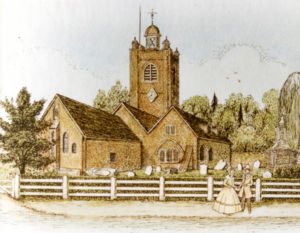
The church in 1812
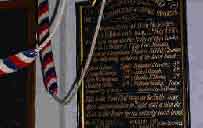
On the afternoon of Sunday, February 9th, 1969 the church was destroyed by fires which had been lit in five places. The silver, some vestments, and the registers dating back to 1558, were saved from the flames. While the building lay in ruins, services were held in the Memorial Hall; the ‘the real church – the people of St Mary’s – had not been destroyed’.
The new building, designed by John Phillips, is almost square and full of light, with the altar close to the centre. It was re-dedicated by the Bishop of Barking on Saturday, June 3rd, 1972, and incorporates a Chapel dedicated to St Philip and St James, commemorating the amalgamation of the two parishes in the previous year.
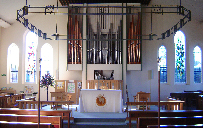
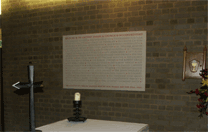
The church contains interesting memorials dating back to the 17th century, highlighting Woodford’s history including Blessed John Larke, Rector in the 1520s, was martyred at Tyburn in 1544 for defying Henry VIII’s supremacy in matters of religion. A memorial stone lists all our Rectors from 1221 to 2008.
Click here for a larger pictureIn front of the church there is a large memorial to William Morris senior – the father of William Morris of the ‘Arts & Crafts’ movement – as well as a war memorial in honour of those who died in the two World Wars and subsequent conflicts. On the church’s north wall there is a memorial plaque with the names of Woodford men who died in the first World War.
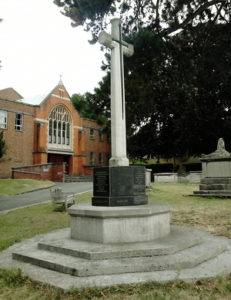
Woodford in 1876
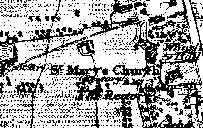
Woodford, Essex (Dom. Wodeford), a district of citizens’ villas, on the Epping road, 7½ miles from London by road, 8½ miles by the George Lane Station (for Church End), 9½ miles by the Woodford Station (for Woodford Green and Woodford Bridge), of the Epping and Ongar branch of the Great Eastern Railway. Population 4609, of whom 1188 were in the ecclesiastical district of St. Paul Woodford Bridge, and 106 in public institutions. Inns: White Hart, George, Church End; Castle Hotel, Woodford Green; Horse at Well, Woodford Wells. The parish is of great extent. There is no village proper, but instead are four distinct and widely separated clusters of houses – Woodford, or Church End, Woodford Green, Woodford Wells, and Woodford Bridge. Woodford Church End consists of little more than a dozen commonplace houses by the church, with a few great houses standing apart in elm-bordered grounds. Many new houses have, however, been built lately within the church district, but to the west of the highroad.
The Church, St. Mary, is a very poor specimen of the Gothic of 1817. It is of brick covered with stucco, and consists of nave, aisles, and short chancel, south porch, and tall battlemented west tower. South of the church is a yew-tree, the trunk of which is over 14 ft. in girth at 3 ft. from the ground. At Woodford Green, ½ a mile north of the church, are the best shops, many of them large and well-stocked, with good plate-glass fronts, ranged about two sides of a very large green; on the farther side is the Castle Hotel, a large and good house. Bordering the green are several mansions standing within elm-lined grounds. On the northeast is an early Dec. church, with a tall tower and shingled spire; and the rapid increase of the population is shown by the fact that though the church is almost new, it is being enlarged (May 1876) by the addition of a north aisle. Not far from it is a large and handsome Congregational church, of stone, Early English in style, cruciform, with a tower and spire 145 ft. high.
The noticeable Byzantine building of coloured bricks, on the opposite side of the Green, is a Methodist Free Church. Woodford Wells, about ½ a mile north of Woodford Green, and connected with it by modern cottage and villa residences, owes its name to medicinal springs formerly in repute for many diseases, but which were a century ago already neglected. The hamlet, which has a cheerful, old-fashioned, country aspect, lies at the foot of Buckhurst and Chigwell Hills, and the southern edge of the open part of Epping Forest; and though the wells are neglected, an ornamental drinking fountain, with a tall roof of enamelled tiles, on the Green, by the Horse at the Well inn, serves to recall their memory. At Woodford Wells is the Rescue Society’s Home for Girls. Woodford Bridge, on the Ongar road, 1½ miles east of Woodford Green, and 2 miles northeast of Woodford church, is an outlying hamlet, which was created an ecclesiastical district in 1854, and had 1188 inhabitants in 1871. The houses line the road up the slope of the hill, north of the bridge over the Roding, from which the place takes its name. The Church (St. Paul) lies off the road, on the right, by the 9 mile stone, on the edge of Wilcox Green. It is a plain early Dec. building of stone, erected in 1854, and comprises nave, deep chancel of a lower pitch, and tower and short spire at the northwest The Woodford Railway Station is midway between Woodford Green and Woodford Bridge.

